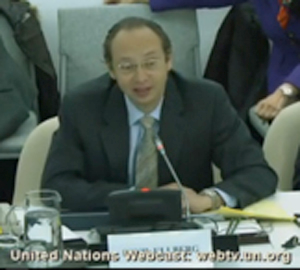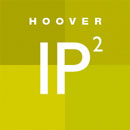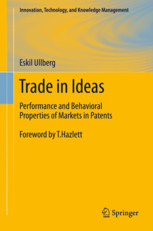Book release Dec 2014: New Perspectives on Internationalization and Competitiveness — Integrating Economics, Innovation and Higher Education
Which comes first in a global world economic system: internationalization or internal market competitiveness? Answers to such a broad question demands an interdisciplinary discussion and a more integrated view today, of economics, innovation and higher education.
This book is about the integration of science and technology in an increasingly international and competitive environment for firms, universities and nations. Two workshops were held to discuss internationalization and competitiveness. The purpose was to identify basic problems, i.e. extant in several disciplines, which could help in better integrating economics, innovation and higher education. Fields covering policy and its measurement across economics, strategy, higher education and new research methods where discussed in one joint forum allowing for multiple angles to this over arching theme. Nine papers, which make up a chapter each, are summarized to give a first overview, and four identified basic problems: the including of time to think in economic theory, i.e. creative and operational processes, universities as economic actors, strategic dimension of team work, and agency in measuring innovation. In particular the integration of global markets (including emerging markets), invention/innovation and higher education attracted special interest among participants. The introduction is a first take on these basic problems, which are also inputs to future interdisciplinary research projects, whose results in turn are input to policy and its measurement, and better theoretical economic understanding. The hope is thus that a further discussion will follow, through other publications.
Welcome to participate in the discussion!
Eskil Ullberg, PhD
From the back
This excellent collection of essays provides new insights as to how the development and diffusion of knowledge are facilitating convergence in the structure of research organizations across the globe — a process that has enormous implications for how actors in all parts of the world compete with one another in an increasing array of arenas.
The essays have valuable implications for understanding how producers of all kinds of knowledge across the globe are competing with one another and how geographical space and nation states are less important in the competition for novelty.
Rogers Hollingsworth
University of Wisconsin (Madison)
University of California San Diego
From Introduction (Springer preview)
This book is about the integration of science and technology in an increasingly
international and competitive environment for firms, universities and nations.
Science is here referring to higher education and research. Technology is referring
to technical solutions (which may be patented, trade secrets or “open source”) and
its application in new product and service innovations. What tie these topics together
are economics and their respective measurement, hence the subtitle: integrating
economics, innovation and higher education. This scope makes the book an input to
today’s global socio-economic development in terms of policy and measurement.
The articles and idea papers were originally discussed using a workshop format
to present in an interdisciplinary fashion, areas of current research and thought
related to internationalization and competitiveness with the aim of identifying basic
problems–problems extant in all disciplines–to inform new research projects which
in turn could inform policy.
The contributions to the first workshop were intended to include disciplines from:
economics, higher education, strategic cooperation and culture. In the follow-up
workshop which built on the findings from the first workshop, in particular the strategies,
take a look at those strategies adopted by businesses and governments for institutional
development, emerging market development, faculty entrepreneurship and
Big Data as a research method. (Unfortunately, the culture theme was not possible to
cover in the end. It was replaced by a scientific “culture” of methodologies.)
The papers are organized in two main sections: science and economics, and innovation
policy and its measurement. Within each section are first the policy related
papers and then the measurement related. The 9 papers–a selection from 27 presentations
from both workshops–include 4 with policy focus and 5 with measurement
focus. The structure of the book was inspired by D. North (1981) who contends that
“the second economic revolution” was the integration of science and technology.
A range of problems were discussed during and after the workshops and a few
initial basic problems were identified. These are certainly only a beginning of a long
list and, hopefully, many more basic problems will be identified by the readers of
this book. They are, in short:
1. Time to think: A better balance between the creative process and operational
process, to allow for new solutions to be created. People need “time to think”, to
create “new” which is in contrast to activities on the margin in operations of
“more”.
2. Higher education as economic agents: Policy implications of universities as
input to economic development, in close, international, cooperation with economic
and government agents.
3. Agency in measurement of innovation: Behavioral properties of institutions for
efficiency that includes entrepreneurship. Study of “people x institutions”, not
only institutions needed to include human behavior in policy analysis.
4. The Strategic Dimension of Team work: Diversification of ideas as a new measure:
A structural element that structures higher education and research in more
interdisciplinary ways that facilitates international cooperation, but also between
firms, universities and government, creating increased competitiveness.
The key discussions in each paper, and their relation into this bigger picture of
analysis, are now summarized, after which an outline is presented of each of the
initial basic problems.
New Perspectives on Internationalization and Competitiveness
From the back: This excellent collection of essays provides new insights as to how the development and diffusion of knowledge are facilitating convergence in the structure of research organizations across the globe — a process that has enormous implications for how actors in all parts of the world compete with one another in an increasing array of arenas.
The essays have valuable implications for understanding how producers of all kinds of knowledge across the globe are competing with one another and how geographical space and nation states are less important in the competition for novelty.
Rogers Hollingsworth
University of Wisconsin (Madison)
University of California San Diego
Trade In Ideas
From the back: “This is a book for the times. Never have we been more in need of the wealth creation process that can only come from innovations subjected to the trial and error process of selection to decide what among all the experiments can be supported for further trial.”
–Vernon L. Smith, Nobel Laureate in Economics 2002, Chapman University
Research on Markets in Patents presented in this book called Trade In Ideas – Performance and Behavioral Properties of Markets in Patents.



















Recent Comments